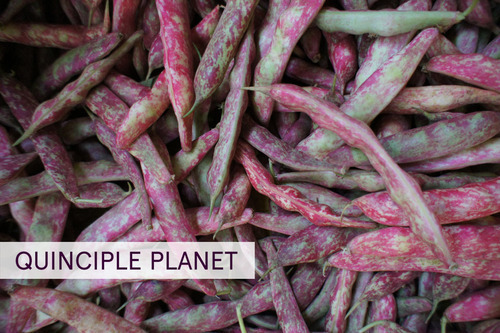
by Kate Galassi
In the past few years heirloom vegetables have been the darlings of the farmers’ market. Farmers are growing Green Zebra tomatoes, Jacob’s Cattle beans, Amish Deer Tongue lettuce, Helios radishes and Newtown Pippin apples. And market shoppers are going nuts for them. But what exactly is an heirloom? And if a vegetable isn’t an heirloom, what is it?
Heirloom is one of those tricky food words that gets tossed around a lot and doesn’t have an exact meaning. Most people use the word heirloom to refer to specific varieties of fruits and vegetables that were saved by individuals and passed down from generation to generation. These vegetables often have unusual colors or shapes and can sometimes have superior taste. But because they come from home gardens and are sometimes suited to only a particular climate (where the original family first was growing them) they don’t always perform well on commercial farms. Yields can be low or the vegetables and fruit can be very delicate, thus difficult to transport to market.
So what are all the other vegetables we eat if they aren’t heirlooms? Most seeds come out of breeding programs at universities or seed companies. The typical process for breeding a new variety involves growing out hundreds or thousands of plants from an already existing variety and then selecting the plants that display a certain trait (say cauliflower with a purple color or particularly plump peas) and then saving only the seeds from those plants. The seeds are planted and the selection process continues for many more generations, strengthening the particular trait with each new generation.
It is this kind of traditional breeding that brought us some of the best vegetables we know including the sugar snap pea, which was developed by Calvin Lamborn more than 30 years ago. These days he’s hard at work creating purple and maroon snow peas. With their skinny pods and gorgeous colors they look like crazy enough to be an heirloom. So next time you’re at the market be sure to ask your farmer where they got the seeds for your favorite vegetable. The answer just might surprise you.
See what’s in next week’s box.
